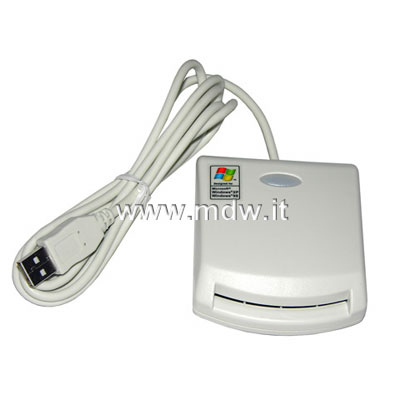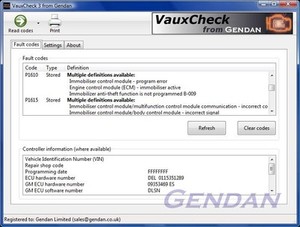Smart Card Iso 7816-1
SLE4428 Smart CardCode: SLE4428Programmable Security Codeverification logic. All the memory, except for the PSC, canalways be read. The memory can be written or erased only afterPSC verification. After eight successive incorrect entries theerror counter will block any subsequent attempt at PSCverification and hence any possibility to write and erase. ThisIC is one of the most popular in the industry.DownloadDatasheetQty 1-100 PiecesQty 101-499 PiecesQty 500-999 PiecesQty 1000-4999 PiecesQty 5000+SLE4442 Smart CardCode: SLE4442Intelligent 256-Byte EEPROM with Write Protect Function andProgrammable Security Code (PSC).
Introduction Of Smart Card

This chip contains and EEPROMorganized 1024 x 8 bit offering the possibility of programmablewrite protection for each byte. Reading of the whole memory isalways possible. The memory can be written and erased byte bybyte.DownloadDatasheetQty 1-100 PiecesQty 101-499 PiecesQty 500-999 PiecesQty 1000-4999 PiecesQty 5000+AT24C12816KBytes Memory CardThe AT24C128 provides 131,072 bits of serial electricallyerasable and programmable read only memory (EEPROM) organized as16,384 words of 8 bits each. The devices are optimized for usein smartcard applications where low power and low-voltageoperation may be essential.DownloadDatasheetQty 1-100 PiecesQty 101-499 PiecesQty 500 or more PiecesACOS3 64KB Secure CardDatasheetACOS3 isspecifically designed for highly secure paymentapplications.
Smart Card StandardsPrimarily, smart card standards govern physical properties, communication characteristics, and application identifiers of the embedded chip and data. Almost all standards refer to the ISO 7816-1,2 & 3 as a base reference.
International Organization for Standardization (ISO)The ISO facilitates the creation of voluntary standards through a process that is open to all parties. ISO 7816 is the international standard for integrated-circuit cards (commonly known as smart cards) that use electrical contacts on the card, as well as cards that communicate with readers and terminals without contacts, as with radio frequency (RF/Contactless) technology. Anyone interested in obtaining a technical understanding of smart cards needs to become familiar with what ISO 7816 and 14443 does NOT cover as well as what it does.
Copies of these standards can be purchased through the (ANSI). Copies of ISO standards are for sale on the.Application-specific properties are being debated with many large organizations and groups proposing their standards. Open system card interoperability should apply at several levels: 1). To the card itself, 2). The card's access terminals (readers), 3). The networks and 4). The card issuers' own systems.
ISO/IEC 7816ISO/IEC 7816 is a multi-part international standard broken into fourteen parts. ISO/IEC 7816 Parts 1, 2 and 3 deal only with contact smart cards and define the various aspects of the card and its interfaces, including the card’s physical dimensions, the electrical interface and the communications protocols. ISO/IEC 7816 Parts 4, 5, 6, 8, 9, 11, 13 and 15 are relevant to all types of smart cards (contact as well as contactless). They define the card logical structure (files and data elements), various commands used by the application programming interface for basic use, application management, biometric verification, cryptographic services and application naming. ISO/IEC 7816 Part 10 is used by memory cards for applications such as pre-paid telephone cards or vending machines. ISO/IEC 7816 Part 7 defines a secure relational database approach for smart cards based on the SQL interfaces (SCQL).
ISO/IEC 14443ISO/IEC 14443 is an international standard that defines the interfaces to a 'close proximity' contactless smart card, including the radio frequency (RF) interface, the electrical interface, and the communications and anti-collision protocols. ISO/IEC 14443 compliant cards operate at 13.56 MHz and have an operational range of up to 10 centimeters (3.94 inches). ISO/IEC 14443 is the primary contactless smart card standard being used for transit, financial, and access control applications. It is also used in electronic passports and in the FIPS 201 PIV card. ISO/IEC 15693ISO/IEC 15693 describes standards for 'vicinity' cards. Specifically, it establishes standards for the physical characteristics, radio frequency power and signal interface, and anti-collision and transmission protocol for vicinity cards that operate to a maximum of 1 meter (approximately 3.3 feet).ISO/IEC 7501 describes standards for machine-readable travel documents and has made a clear recommendation on smart card topology.

International Civil Aviation Organization (ICAO)ICAO issues guidance on the standardization and specifications for Machine Readable Travel Documents (MRTD) such as passports, visas, and travel documents. ICAO has published the specification for electronic passports using a contactless smart chip to securely store traveler data. Federal Information Processing Standards (FIPS)FIPS, developed by the Computer Security Division within the National Institute of Standards and Technology (NIST). FIPS standards are designed to protect federal assets, including computer and telecommunications systems.
The following FIPS standards apply to smart card technology and pertain to digital signature standards, advanced encryption standards, and security requirements for cryptographic modules. ANSI-INCITS 358-2002ANSI-INCITS 358-2002, BioAPI Specification - (ISO/IEC 19784-1). BioAPI is intended to provide a high-level generic biometric authentication model-one suited for any form of biometric technology. It covers the basic functions of enrollment, verification, and identification, and includes a database interface to allow a biometric service provider (BSP) to manage the technology device and identification population for optimum performance. It also provides primitives that allow the application to separately manage the capture of samples on a client workstation, and the enrollment, verification, and identification functions on a server. The BioAPI framework has been ported to Win32, Linux, UNIX, and WinCE.
Iso 7816-4 Apdu Commands
Note that BioAPI is not optimum for a microcontroller environment such as might be embedded within a door access control reader unit or within a smart card processor. BioAPI is more suitable when there is a general-purpose computer available.
ANSI-INCITS 398ANSI-INCITS 398, Common Biometric Exchange Formats Framework (CBEFF) - (ISO/IEC 19785-1). The Common Biometric Exchange Formats Framework (CBEFF) describes a set of data elements necessary to support biometric technologies and exchange data in a common way. These data can be placed in a single file used to exchange biometric information between different system components or between systems. The result promotes interoperability of biometric-based application programs and systems developed by different vendors by allowing biometric data interchange. This specification is a revised (and augmented) version of the original CBEFF, the Common Biometric Exchange File Format, originally published as NISTIR 6529. ANSI-INCITSANSI-INCITS Biometric Data Format Interchange Standards.
ANSI-INCITS has created a series of standards specifying the interchange format for the exchange of biometric data. These standards specify a data record interchange format for storing, recording, and transmitting the information from a biometric sample within a CBEFF data structure.
The ANSI-INCITS published data interchange standards are shown below. There are ISO equivalents to each standard listed here. ANSI-INCITS 377-2004Finger Pattern Based Interchange Format ANSI-INCITS 378-2004Finger Minutiae Format for Data Interchange ANSI-INCITS 379-2004Iris Interchange Format ANSI-INCITS 381-2004Finger Image Based Interchange Format ANSI-INCITS 385-2004Face Recognition Format for Data Interchange ANSI-INCITS 395-2005Signature/Sign Image Based Interchange Format ANSI-INCITS 396-2004Hand Geometry Interchange Format ISO/IEC 19794ISO/IEC 19794 series on biometric data interchange formats. Part 1 is the framework, Part 2 defines the finger minutiae data, Part 3 defines the finger pattern spectral data, Part 4 defines the finger image data, Part 5 defines the face image data, Part 6 defines the iris image data, and still in development, Part 7 will define the signature/sign time series data, Part 8 will define the finger pattern skeletal data and Part 8 will define the vascular image data.
I’d go to a scrap dealer and get the part cheaper, more like 100-150.  I got mine from a spares place in Oldham through Ebay, it was nearly 300 at that time and I’ve done a quick search and the genuine ones are still around that price.
I got mine from a spares place in Oldham through Ebay, it was nearly 300 at that time and I’ve done a quick search and the genuine ones are still around that price.